A hundred years of Tata steel
By In August 1907 a small s | 31 Jan 2007
A hundred years ago, Tata Steel undertook a groundbreaking journey into an unknown and uncharted territory. It succeeded beyond all expectations. Sujata Agrawal* profiles the success of India's steel giant that this morning stepped in to global centre-stage.
In August 1907 a small steel plant in Sakchi, in eastern India, was set up. It marked the beginning of a journey fraught with challenges and driven by Jamsetji Tata's dream of a nation that stood tall amongst the league of industrialised nations.
A hundred years later, the small steel plant has morphed into a world-class conglomerate. True to the legacy of its founder, Tata Steel overcame the shackles of a controlled economy and reinvented itself to become one of the top steel companies of the world. Ranked as the World's Best Steel Maker for the third time, in 2006, by World Steel Dynamics, the company and its determined workforce are now steeling themselves to meet the challenges of a global economy.
As Tata Steel gets ready for its centenary celebrations, B Muthuraman, managing director of Tata Steel, and the spearhead of its transformation from an old economy monolith to a knowledge-based, value-driven, global enterprise, muses on the journey so far and the citadels yet to be conquered.
The early years
A hundred years ago, Tata Steel undertook a groundbreaking journey into an unknown and uncharted territory. It succeeded beyond all expectations, due to the all-encompassing vision and philosophy of our founder and those who followed him.
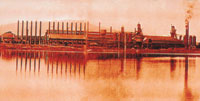 Jamsetji's philosophy encompassed values such as integrity, trusteeship, ethics and respect for all stakeholders. He believed that the primary purpose of an industrial organisation is to improve the quality of life of the community. At Tata Steel, we have followed his footsteps and built the company through pioneering and nation-building activities that abide with the Tata Group credo of 'leadership with trust'.
Jamsetji's philosophy encompassed values such as integrity, trusteeship, ethics and respect for all stakeholders. He believed that the primary purpose of an industrial organisation is to improve the quality of life of the community. At Tata Steel, we have followed his footsteps and built the company through pioneering and nation-building activities that abide with the Tata Group credo of 'leadership with trust'.
The journey has been an extraordinary one. The company has faced many challenges and gone through several transitions necessitated by changes in the business environment.
Tata Steel was the first steel company to be set up in India. We had no knowledge of the technology and manufacture of steel in the country; everything had to be learnt and developed from scratch. Spurring this pioneering effort was Jamsetji's dream of building modern India through industrialisation and putting it firmly on the road to development.
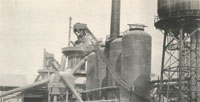 In 1924, when the company was in financial difficulties, Dorab Tata pledged his entire personal wealth to save the company. The history of Tata Steel is replete with such instances of commitment and zeal. During the first and second world wars, steel from Tata Steel was used for shells and armoured cars. The allied victories in Mesopotamia were in no small measure due to the 1,500 miles of railway line made with 3,00,000 tonnes of steel that came from its plant.
In 1924, when the company was in financial difficulties, Dorab Tata pledged his entire personal wealth to save the company. The history of Tata Steel is replete with such instances of commitment and zeal. During the first and second world wars, steel from Tata Steel was used for shells and armoured cars. The allied victories in Mesopotamia were in no small measure due to the 1,500 miles of railway line made with 3,00,000 tonnes of steel that came from its plant.
The company indigenously developed the coal-based Direct Reduction Process and the expertise to mine coal, iron ore and limestone was shared with other companies. When the Indian government decided to install steel plants in Bhilai, Rourkela and Durgapur, it was Tata Steel that trained the first batches of engineers.
Nation-building and social welfare are embedded in the genes of Tata Steel and its employees. From the massive earthquake that struck North Bihar in 1934 to the tsunami that devastated Tamil Nadu in 2004, our people have been the first to offer support and succour whenever a natural calamity has struck the country.
Modernisation and transformation
The most important milestone in the company's history was its transition from a company operating in a controlled economy to one that is flourishing in a globally competitive environment. This transformation was so radical it involved deconstructing the company and rebuilding it to face the challenges of a liberalised era.
Post liberalisation, we found ourselves with an outdated plant with obsolete and inefficient machinery. The quality of our products was poor and cost of production was high. We were determined to enter the competitive area with new technology and processes in order to succeed against global competition. We laid the foundation of a new Tata Steel, post 1991, with the same values and philosophy as have been guiding us from the beginning.
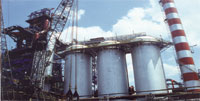 The modernising of the plant was a huge challenge as the company did not have the requisite capital. Years of government control had left it in poor financial health. But that did not stop the process. Between 1991 and 2000, Tata Steel spent more than Rs 10,000 crore to build a new plant within the old campus. It speaks volumes for the courage and conviction of the management that it borrowed the huge amount required and went ahead with its plans. Today, the Jamshedpur Steel Works is one of the most modern, technologically up-to-date and environmentally clean plants in the world.
The modernising of the plant was a huge challenge as the company did not have the requisite capital. Years of government control had left it in poor financial health. But that did not stop the process. Between 1991 and 2000, Tata Steel spent more than Rs 10,000 crore to build a new plant within the old campus. It speaks volumes for the courage and conviction of the management that it borrowed the huge amount required and went ahead with its plans. Today, the Jamshedpur Steel Works is one of the most modern, technologically up-to-date and environmentally clean plants in the world.
Apart from upgrading the plant, there were makeovers in other areas also. The business processes were re-engineered to suit the competitive era and a culture of continuous improvement was ushered into the company. Apart from quality circles, value engineering and quality improvement projects, we undertook a programme called 'Total Operating Performance' (TOP) with the help of McKinsey, which reduced our cost of production considerably.
Within the Tata Group, Tata Steel was in fact one of the first to adopt the Tata Business Excellence Model (TBEM). It helped us detail our business processes, benchmark with the best and enhance them. In the last few years we have adopted several other initiatives such as TPM, Six Sigma, Aspire and Theory of Constraints. We are now in the process of bringing improvement initiatives under a single umbrella of Total Quality Management (TQM) to enthuse our people to newer heights of excellence.
Men of mettle
Our people — to them goes the credit for this centenary of achievement. It would be difficult to find a workforce so loyal, dedicated and committed to a culture of improvement. They are the steel in Tata Steel.
Moving from a mindset of complacency, engendered by the controlled environment Tata Steel had to operate in for so long, our people are now daring to dream. They have picked up knowledge and skills in IT and new technologies with enthusiasm. They have developed and honed marketing skills, acquired sophisticated financial acumen and strategic thinking abilities and are now focusing on the skills required to work in new geographies and integrate with newly merged companies.
In HR, I believe there is nothing such as 'good enough'. Our senior executives spend a lot of time nurturing people. We are constantly evolving processes for better training, performance management and compensation management along with rewards and recognition for our employees. I see HR as the single most important challenge going forward.
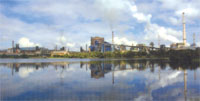 Our management-labour relations are a global benchmark. Tata Steel has had some very outstanding union leaders such as C F Andrews, Subhash Chandra Bose, Abdul Bari, Michael John and V G Gopal who understood people and organisations. We have good processes and forums for working together and hold joint consultations between the union and the management. The rationalisation of manpower to reduce our costs was done with the participation of the worker's union. Tata Steel's VISION-2007 was also co-created.
Our management-labour relations are a global benchmark. Tata Steel has had some very outstanding union leaders such as C F Andrews, Subhash Chandra Bose, Abdul Bari, Michael John and V G Gopal who understood people and organisations. We have good processes and forums for working together and hold joint consultations between the union and the management. The rationalisation of manpower to reduce our costs was done with the participation of the worker's union. Tata Steel's VISION-2007 was also co-created.
Steely resolve
In the last one hundred years, the demand for steel has varied according to the development activities worldwide. Between 1900-1935, demand grew at about 3.4 per cent. In the next 40 years it was a robust 6.7 per cent due to strong growth in North America, Europe and Japan. Between 1975-2000 the growth rate fell to about 1.1 per cent due to factors such as the oil crisis, the break-up of the former Soviet Union and the South East Asian crisis, and the fact that there was no major country on a growth path. In the last five years, the world demand for steel has grown by over 5 per cent per annum largely on the strength of demand from China and, to some extent, demand from India. I believe the next 30-40 years will see a very healthy growth rate of 3 to 4 per cent per annum due to demand from the these two countries.
The steel industry has always faced competition from aluminium, other metals and alloys, plastic, paper and composites, and it will continue to compete against newer materials as new technologies emerge. The challenge is to keep on improving steel itself and becoming more cost competitive. I also believe that steel has scope for many more applications that have not as yet been thought of.
As a company, Tata Steel has the intrinsic strength and capability to become a larger and significant player in the global steel industry. We have a well-defined strategy and action plan to achieve our goal of becoming one of the top 10 steel companies in the world by 2010 along with building / acquiring a capacity of at least 30 million tonnes, with operations and business spread out in the relevant markets of the world.
We plan to do this through acquisitions in countries where markets are growing, greenfield plants in India and in countries where raw materials and/or fuel is available. We are present in South Africa and South East Asia and China (through the acquisitions of NatSteel Asia and Millennium Steel). We are looking at Bangladesh and Europe next. I believe it is always important to set targets and work towards them. We will do this while we continue to maintain the fundamental values of Tata Steel and take these values to wherever we operate in the world.
We will have a grand celebration to mark the centenary of Tata Steel next year. In the offing is a film and a book, created specially to mark the occasion. Watch out also, for the announcement of a project that will benefit the larger community in the areas we operate in.
| Dream town Jamshedpur Jamshedpur is a model town. It is the cleanest and greenest city in India. It has 24-hour power supply. And it is perhaps the only city where you can safely drink water straight from the tap. I have lived in Jamshedpur, on and off, for nearly 20 years. It is a city that offers a high quality of life. It has wide roads, green open spaces, great sporting facilities and quality educational and healthcare institutions. New facilities and amenities are regularly being added to improve the quality of life in this township for Tata Steel employees.
|
*The author is deputy manager, Tata Services. The article originally appeared in tata.com.


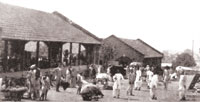 Living tribute to the visionary founder of Tata Steel, Jamsetji Tata, Jamshedpur is the embodiment of his concern for people and, in particular, the workers whose toil creates the wealth of nations.
Living tribute to the visionary founder of Tata Steel, Jamsetji Tata, Jamshedpur is the embodiment of his concern for people and, in particular, the workers whose toil creates the wealth of nations.  Jamshedpur is proof of Tata Steel's huge sense of corporate social responsibility. With the formation of Jusco — a separate service utility company, owned 100 per cent by Tata Steel — this wonderful town will grow and flourish even more in the years to come.
Jamshedpur is proof of Tata Steel's huge sense of corporate social responsibility. With the formation of Jusco — a separate service utility company, owned 100 per cent by Tata Steel — this wonderful town will grow and flourish even more in the years to come.





















